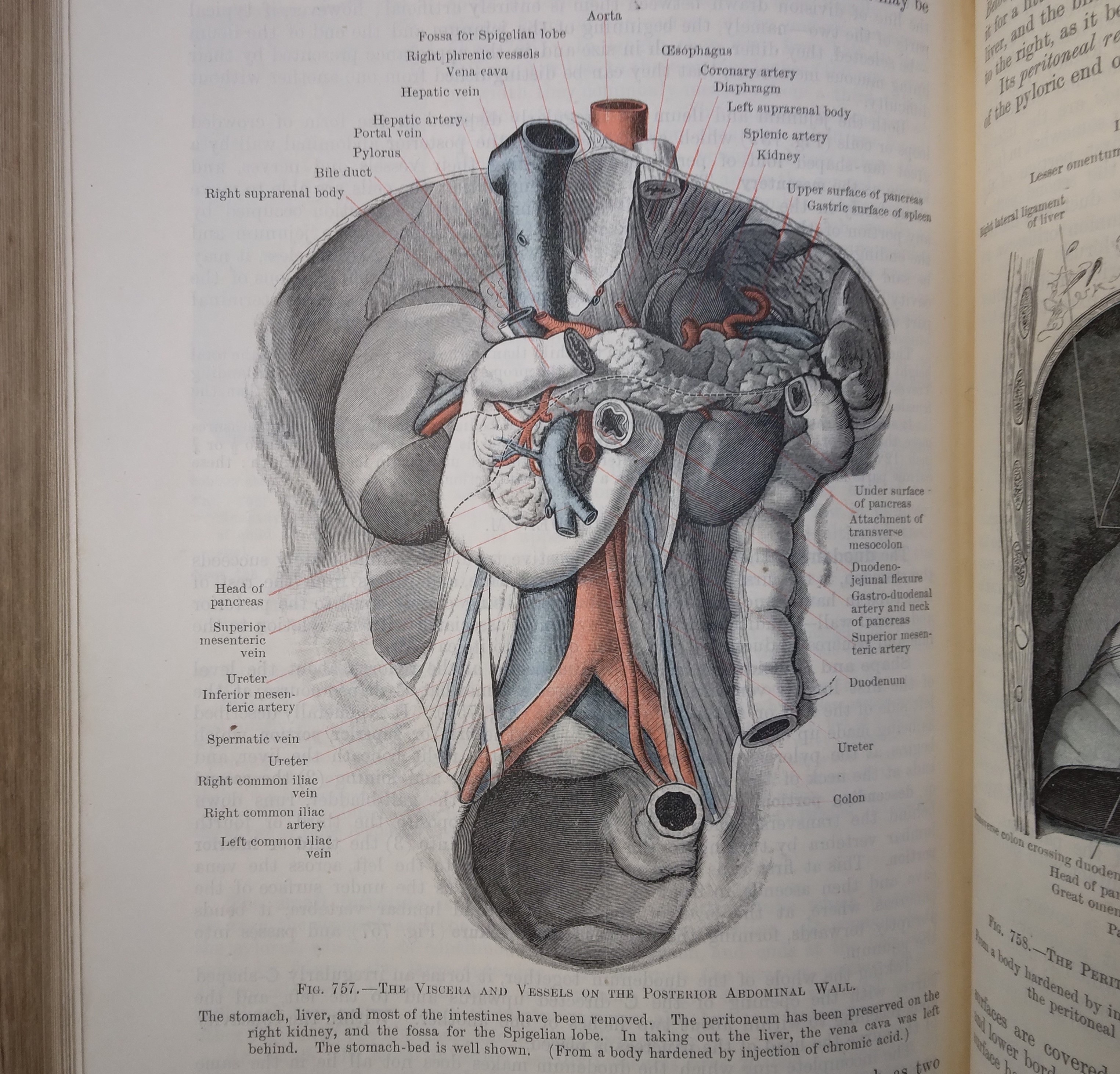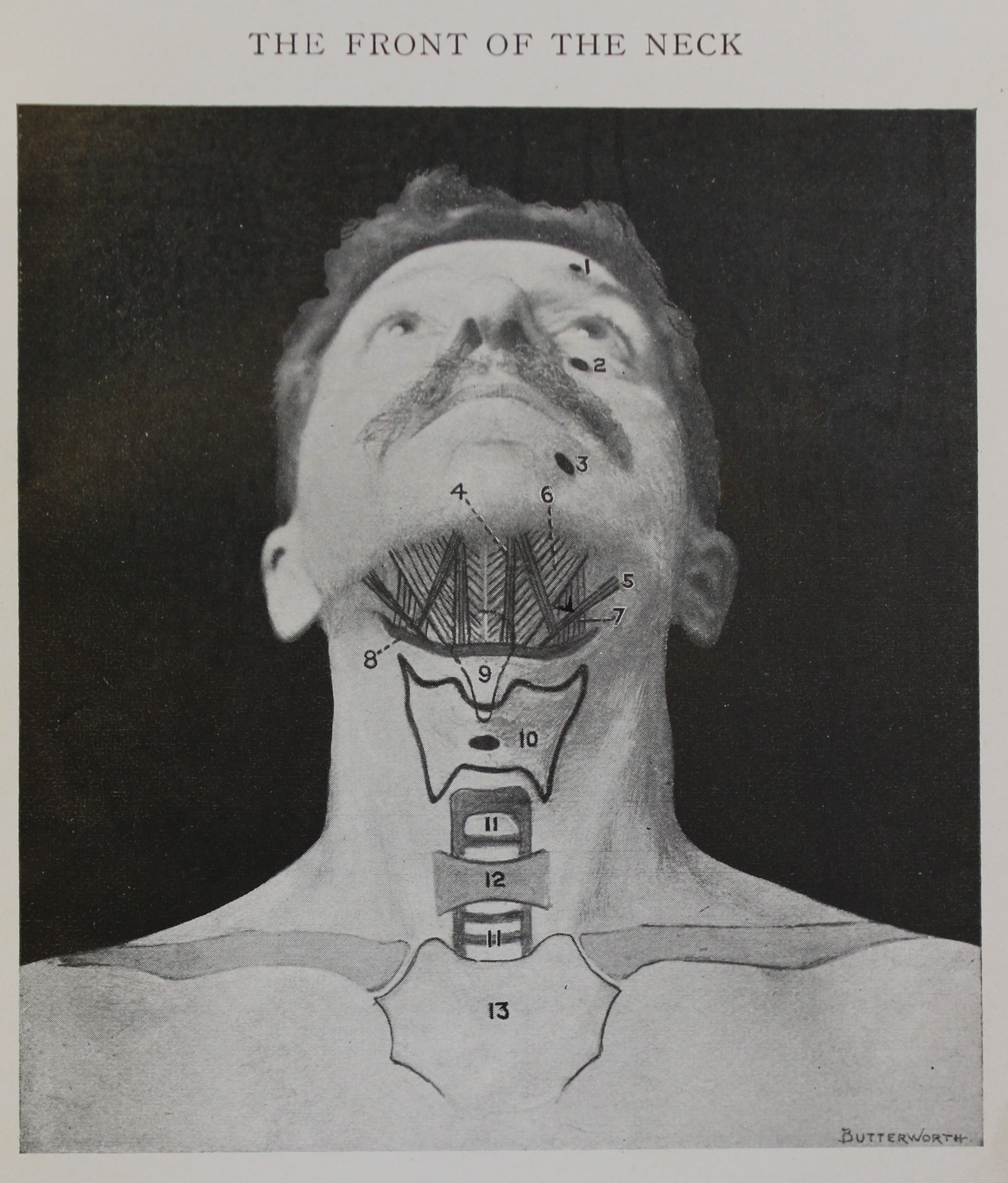Anatomy, X-rays, sex and morals: recent donations to the heritage library
The RCP heritage library has been grateful to receive several donations of twentieth-century medical books in recent months, all of which complement and expand our existing collection of the history of medicine and physicianly work.
Anatomy: internal and external
The Text-book of anatomy edited by Daniel John Cunningham (1850–1909) is a classic of medical publishing. Surprisingly, the heritage library didn’t have a copy of any of its numerous editions, a fact that became apparent when I was researching the 2019 exhibition Under the skin. So I was delighted to be offered a copy of the third edition, published in 1909, from the collection of a retired GP.
Cunningham was a Scottish anatomist, who taught at Trinity College Dublin and the University of Edinburgh. In his preface to the book he notes that formalin, a hardening and preserving agent, had recently been introduced into anatomical practice. This enabled a much more accurate study and depiction of the least stable parts of the body – the internal organs and viscera – but had meant that the authors working on those sections of the book faced ‘an especially arduous duty’ in presenting the state of knowledge in this field.
Almost all of the 824 wood-engraved illustrations in the book were prepared specifically for the work, many of them by J. T. Murray, a ‘talented artist’ thanked by Cunningham for his ‘great technical skill and patience’. The illustrations were printed in up to 4 colours – black, red, blue and yellow – where necessary, the colours used to distinguish different systems and tissues from each other.

Landmarks and surface markings of the human body is a different style of anatomy textbook. It uses edited photographs to show the relationship between external features of the body and the anatomical structures within. It is only concerned with how to tell from the outside of a body which anatomical structures lie beneath, and is not a comprehensive account of all of human anatomy. The photographic illustrations are very striking. Again, this was a popular textbook, running to nine editions published between 1904 and 1953.

X-rays: shadows of the body
After their discovery by Wilhelm Röntgen in 1895, X-rays quickly became a convenient way to see inside the human body. The images produced when X-rays are shone through a body are the shadows of the structures within, and are not always straightforward to interpret.
Principles of Roentgenological interpretation (1940) was written by Le Roy Santé, professor of radiology at St. Louis University School of Medicine, Missouri. This book combines reproductions of X-ray images with diagrams and drawings to help the physician interpret how the different tissues of the body appear.
Sex and a happy marriage
Three donations were works by Theodore van de Velde, a Dutch obstetrician who wrote extensively and successfully for a general audience about sex and sexual activity. Sex efficiency through exercises (1933) will be the subject of a separate blog post of its own in the weeks to come. The other two titles donated were Ideal marriage (1946) and Sex hostility in marriage (1931).
Ideal marriage was van de Velde’s magnum opus, a work that made him famous across Europe and beyond. It was first published in Dutch as Het volkomen huwelijk in 1926, and was quickly translated into several other European languages. It was still being reprinted into the 1950s. Our copy was printed in 1946.
The book has nearly 300 pages of detailed explanations of the anatomical, physiological, social and emotional aspects of sex and marriage (always between a man and a woman: same-sex relationships are not within van de Velde’s purview). 8 coloured plates illustrate the anatomical aspects, as well as providing graphs of fertility throughout the menstrual cycle.

In the preface to the book, van de Velde acknowledges that publishing a book that described sexual physiology in such detail in language accessible to non-specialists would have ‘unpleasant results’ for its author. He therefore held off from writing it until he had retired from practice, but was determined to write this book and others because ‘many men and women, even if they dare not say so, will breathe their thanks in the privacy of their nuptial chamber’.
He followed Ideal marriage with Sex hostility in marriage, first published in 1931. It aims to provide advice to married couples who are not participating in, or not enjoying sex. Contrary to what we might expect from attitudes in the 1930s, the book is clear that it’s not merely a wife’s responsibility to acquiesce to her husband’s desires and requests, and that there can be multiple reasons why either partner might not be interested in sex. On the other hand, though it acknowledges that some people do not experience sexual attraction, or experience sexual attraction to their own gender, it treats these non-heterosexual orientations as pathological.
A substantial part of the book is devoted to the business of choosing a partner, including theories of the compatibility between different physical or ‘constitutional’ types, illustrated with numerous photographic plates of artistic works and posed models (all of whom are white). Body shape, facial structure, personality and psychological features are all described and discussed, as are the supposed compatibility of different types of men and women. Though van de Velde doesn’t issue any strict directives about which types are more or less desirable in a partner, his supposedly scientific categorisation of people is markedly similar to other, more overtly troubling eugenicist work of the early twentieth century which classified people by race, appearance and mental ability.
Morals: advice to the young
The last donation I’ll highlight today takes a rather different tone on the subject of sex. A physician’s sermon to young men is a slim volume directed towards men in their late teens and early twenties, advising them to avoid the dangers of sexual activity of all kinds outside of Christian marriage. Masturbation is referred to as ‘self abuse’ and ‘onanism’, ‘a vice which cannot be practiced without eventually injuring the body most seriously’. ‘Illicit intercourse’ (ie sex outside of marriage) is also condemned in the strongest possible terms, although the author notes that at least it’s less common in ‘modern society’ than it was in the ‘heathendom’ of the past.
The author of this sermon was William Pratt (1831–1882), a medical officer and surgeon who practised in Newton, Montgomeryshire. This sermon appears to have been his only publication. It was published in two editions: the first in 1883, and the second in 1903, long after Pratt’s death.
The copy donated to the RCP this year is the second edition. It evidently lurked for a long time at the publishers who printed it, a well-known London medical publishing house called Ballière, Tindall and Cox. In the 1950s a young man in his teens started working there, and was called in to see the firm’s director. The director gave him this copy of the sermon, telling him to read it and pay close attention to its recommendations.
These recommendations included:
-
cold bathing at night and in the morning
-
hard beds (‘soft couches’ being ‘the great breeders of vice’)
-
abundant work
-
plain food, ‘without any of those little things which excite without nourishing’
-
reading authors such as Scott, Dickens, Bulwer and Thackeray, and nothing salacious
-
a careful choice of companions, sticking to people with drive and ambition, and avoiding ‘sneerers’
-
religious devotion
-
taking reputable medical advice where needed. Pratt is very particular to note that readers shouldn’t be tempted by medical adverts in the newspapers, which intend to ‘frighten and fleece’ the unsuspecting. A reputable medical man, says the book, will ‘calm your apprehensions instead of terrifying you’
Whatever Pratt may have said about serious medical professionals being reassuring, his little pamphlet certainly had the opposite effect on at least one of its readers. The young man who was given it at work found it a very frightening and confusing book. He kept it for the following 70 years until he eventually decided to donate it to the RCP library in order to document attitudes of the past.
Katie Birkwood, rare books and special collections librarian
We accept donations to the RCP archives, heritage library and museum according to our collection development and donations policies. Please contact us if you would like to offer anything to add to our collections.
